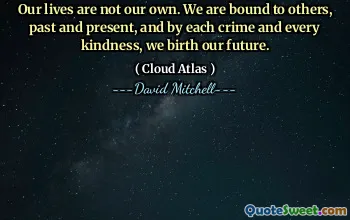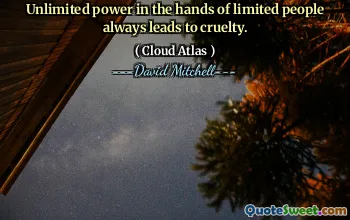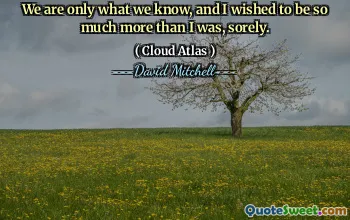
He had imagined Scotland as being a soft place, all gentle heathery hills, but here on the north coast everything seemed sharp and jutting, even the grey clouds that scudded across the pale blue sky. It was as if the bones of the world showed through.
This passage vividly challenges preconceptions and invites a reflection on the nature of expectation versus reality. The initial image of Scotland as a gentle, idyllic landscape conjures a sense of comfort, serenity, and romanticism often associated with its rolling hills and flora. Yet, the reality presented on the north coast starkly contrasts that image—harsh, jagged terrain and rough weather embody an environment that is raw and unrefined.
The phrase “even the grey clouds that scudded across the pale blue sky” highlights how nature itself appears restless and untamed, emphasizing a sense of movement and chaos rather than stillness and peace. When the narrator states, “it was as if the bones of the world showed through,” it evokes an almost visceral image—revealing the underlying structure, the primal elements that compose our world, often hidden beneath surface appearances.
This contrast can symbolize the broader human experience—our expectations built upon stories, images, or assumptions are often challenged by firsthand encounters. It suggests that beneath the surface of perceived beauty or calmness lie complexities, roughness, and truths that are usually unseen.
In a way, the quote reminds us to remain open-minded and adaptable, recognizing that our perceptions are limited and that reality can be more profound, more jagged, than our ideals allow. It also hints at the beauty in rawness, encouraging appreciation for the unsettled and untamed aspects of life, which reveal more genuine truths about the world and ourselves.
Such reflections invoke the idea that understanding often requires us to look beyond superficial appearances, embracing the uncomfortable or sharp realities that truly define places and perhaps, by extension, our own lives.








